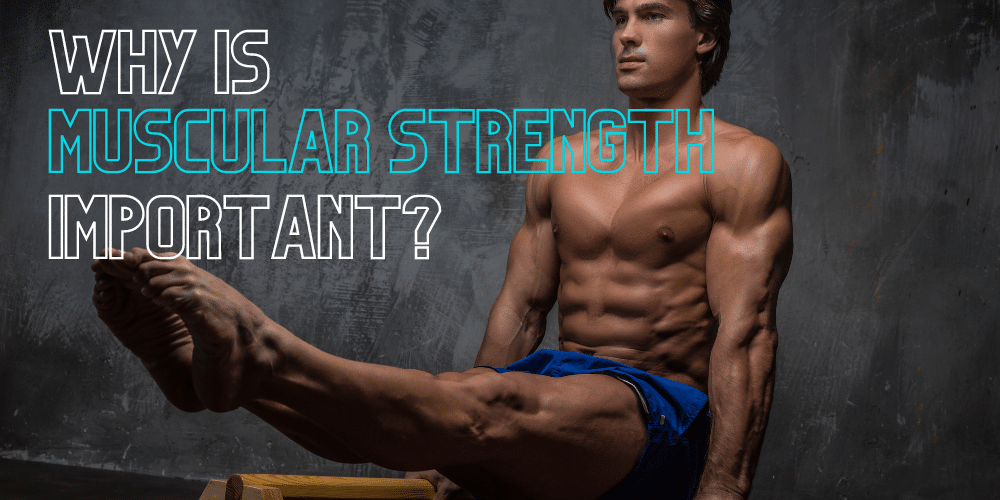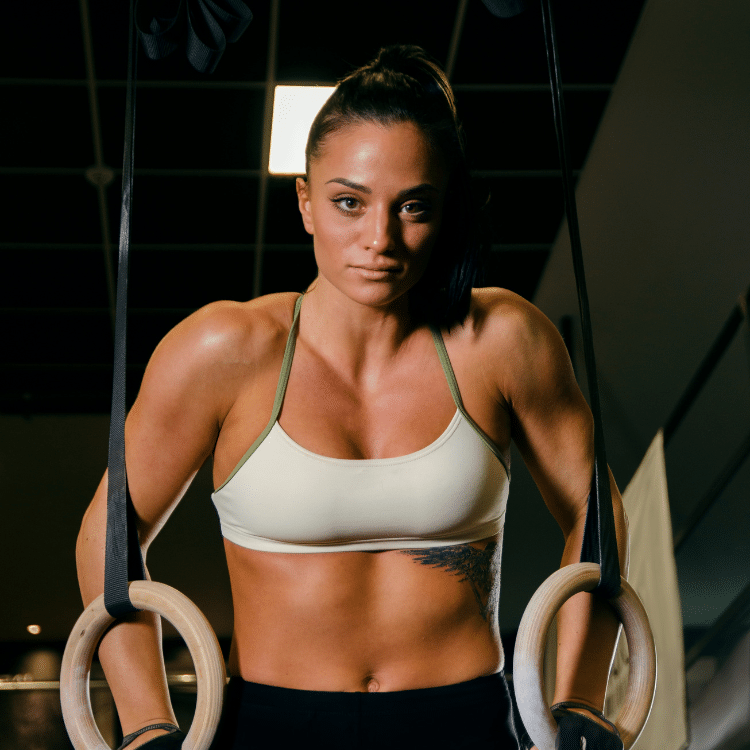
Anyone that’s watched elite gymnastics will be familiar with the impressive physiques on display but why is muscular strength important in gymnastics?
In this article, we will discuss the importance of strength training for gymnastics, as well as some specific conditioning exercises that can help improve a gymnast’s performance.
Introduction
Gymnastics is a sport that requires a unique combination of strength, agility, flexibility, and balance. It’s not enough for a gymnast to be able to perform a single movement; they need to be able to string together a series of movements with fluidity and grace.
Muscular strength allows a gymnast to hold specific body shapes used in bigger movements. For example a hollow dish shape is used in a back handspring. If the shape is not strong enough, the gymnast will lose all their momentum and power when performing the back handspring.
Landing positions are another example of where a gymnast needs great muscular strength. When a vault is performed the gymnast will land on their feet on the mat and they will need lots of strength to hold the desired landing position and control their body so as not to fall over.
Conditioning and strength training are essential components of any gymnast’s training program. These exercises can help improve a gymnast’s strength, reduce the risk of injury, and enhance their performance.
What is Conditioning Training?
Conditioning training is a type of exercise that focuses on improving an athlete’s cardiovascular fitness, muscular endurance, and overall physical fitness.
In gymnastics, conditioning training can help improve a gymnast’s stamina, allowing them to perform at their best for longer periods of time. Conditioning exercises can also help reduce the risk of injury by strengthening the muscles, tendons, and ligaments.

Benefits of Conditioning Training for Gymnastics
There are many benefits of conditioning training for gymnastics, including:
- Improved cardiovascular fitness: Conditioning exercises, such as running, cycling, and jumping rope, can help improve a gymnast’s cardiovascular fitness, allowing them to perform for longer periods of time without getting tired.
- Increased muscular endurance: Conditioning exercises, such as body weight circuits and plyometrics, can help improve a gymnast’s muscular endurance, allowing them to perform multiple repetitions of a movement with ease.
- Reduced risk of injury: Conditioning exercises can help strengthen the muscles, tendons, and ligaments, reducing the risk of injury during practice or competition.
Types of Conditioning Exercises for Gymnasts
There are many types of conditioning exercises that are beneficial for gymnasts, including:
Plyometrics
Plyometrics are exercises that involve explosive movements, such as jumping or bounding. These exercises can help improve a gymnast’s power and explosiveness, making it easier for them to perform movements such as flips and twists. Examples of plyometric exercises include box jumps, squat jumps, and depth jumps.
Cardiovascular Training
Cardiovascular training involves exercises that increase the heart rate and improve the body’s ability to transport oxygen to the muscles. Cardiovascular training can help improve a gymnast’s endurance, allowing them to perform for longer periods of time without getting tired.
Examples of cardiovascular exercises include running, cycling, and jumping rope.
Some coaches argue that cardiovascular training is not a priority for gymnasts because their routines are relatively short. A floor routine is usually around 90 seconds long and is one of the lengthier pieces. A vault run is all over in less than 10 seconds.
This means gymnasts are rely more on their anaerobic systems rather than their aerobic systems.
The same discussion can be applied to a 100 meter sprinter compared to a marathon runner. A sprinter does not require the same amount of endurance training because their race is done in 10 or 11 seconds compared to the two hours or more needed by a marathon runner.
Core Training
Core training involves exercises that focus on strengthening the muscles of the abdomen and lower back. Strong core muscles are essential for gymnastics, as they help provide stability and support during movements such as flips and twists. Examples of core exercises include planks, crunches, and leg raises.

What is Strength Training?
Strength training is a type of exercise that focuses on improving an athlete’s muscular strength and power.
In gymnastics, strength training can help improve a gymnast’s ability to perform movements such as flips, twists, and turns with ease and control. Strength training exercises can also help improve a gymnast’s balance and stability, reducing the risk of injury during practice or competition.
Benefits of Strength Training for Gymnastics
There are many benefits of strength training for gymnastics, including:
- Improved muscular strength: Strength training exercises can help increase a gymnast’s muscular strength, allowing them to perform movements with more power and control.
- Increased balance and stability: Strength training exercises can help improve a gymnast’s balance and stability, making it easier for them to perform movements with precision and control.
- Reduced risk of injury: Strength training exercises can help strengthen the muscles, tendons, and ligaments, reducing the risk of injury during practice or competition.
Types of Strength Training Exercises for Gymnasts
There are many types of strength training exercises that are beneficial for gymnasts, including:
Body weight Exercises
Body weight exercises are exercises that use the body’s own weight as resistance. These exercises can be done anywhere, without the need for equipment. Body weight exercises can help improve a gymnast’s muscular strength and endurance. Examples of body weight exercises include push-ups, pull-ups, and squats.
Weightlifting
Weightlifting involves lifting weights, either free weights or weight machines. Weightlifting can help improve a gymnast’s muscular strength and power. Examples of weightlifting exercises include bench press, deadlifts, and squats.
Conclusion
Hopefully this guide has illustrated why muscular strength is important in gymnastics and shown the benefits of regular conditioning training. These exercises can help improve a gymnast’s overall physical fitness, reduce the risk of injury, and enhance their performance.
Plyometrics, cardiovascular training, and core training are all effective conditioning exercises for gymnastics, while body weight exercises and weightlifting are effective strength training exercises. By incorporating these exercises into their training program, gymnasts can improve their muscular strength and reach their full potential.
If you are interested in developing your muscular strength in gymnastics, check out our programs on offer here at Synergy Gymnastics.
FAQs
Can gymnastics be done without conditioning and strength training?
While it’s technically possible to do gymnastics without conditioning and strength training, these exercises are essential for improving a gymnast’s physical fitness and reducing the risk of injury.
How often should gymnasts do conditioning and strength training exercises?
This will depend on the gymnast’s age, level of experience, and training goals. In general, gymnasts should aim to do conditioning and strength training exercises at least 2-3 times per week.
Can gymnasts lift heavy weights?
Yes, gymnasts can lift heavy weights, but it’s important to do so under the guidance of a qualified coach or trainer to ensure proper form and technique.
Are there any conditioning or strength training exercises that should be avoided in gymnastics?
Some exercises, such as heavy overhead lifts or exercises that place a lot of stress on the lower back, should be avoided in gymnastics to reduce the risk of injury.
Can conditioning and strength training exercises help gymnasts of all ages and skill levels?
Yes, conditioning and strength training exercises can be beneficial for gymnasts of all ages and skill levels, but the exercises should be tailored to the gymnast’s individual needs, age and abilities.
- How to Do a Back Handspring: Complete Step-by-Step GuideLearning how to do a back handspring is an exciting milestone for any gymnast. It builds confidence, agility, and forms the foundation for advanced tumbling… Read more: How to Do a Back Handspring: Complete Step-by-Step Guide
- How To Get Over a Mental Block In Gymnastics: A Complete GuideGymnastics is a sport that requires not only physical strength and skill but also mental strength. When a gymnast feels like they cannot attempt a… Read more: How To Get Over a Mental Block In Gymnastics: A Complete Guide
- The Best Leotard for Girls in 2025: What to Look ForFinding an ideal leotard for girls isn’t just about picking a dazzling design that sparkles (although it does help!). The leotard has to fit perfectly,… Read more: The Best Leotard for Girls in 2025: What to Look For
- The Best Gymnastics Shorts (Our Top Picks)The best gymnastics shorts are designed to be worn over the top of a leotard providing additional coverage around the upper legs, whilst allowing gymnasts… Read more: The Best Gymnastics Shorts (Our Top Picks)
- Decathlon Leotards – Are They Any Good?If you’re in the market for a new leotard, you may be wondering if Decathlon leotards are any good considering the low cost of their… Read more: Decathlon Leotards – Are They Any Good?
- A Complete Guide to Gymnastics Hand RipsAre you tired of dealing with painful gymnastics rips on your hands from training? Look no further – this article offers a comprehensive approach to… Read more: A Complete Guide to Gymnastics Hand Rips






